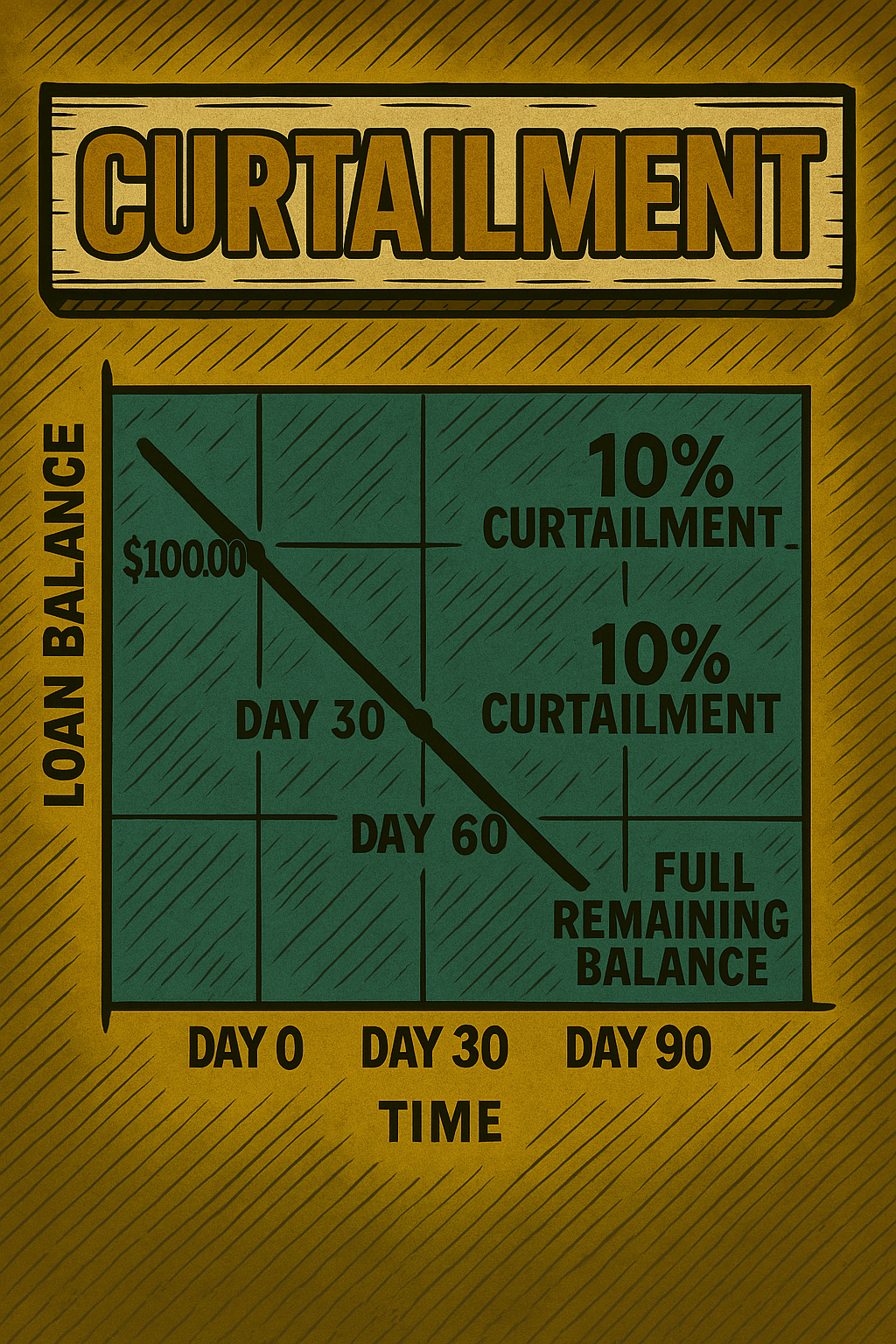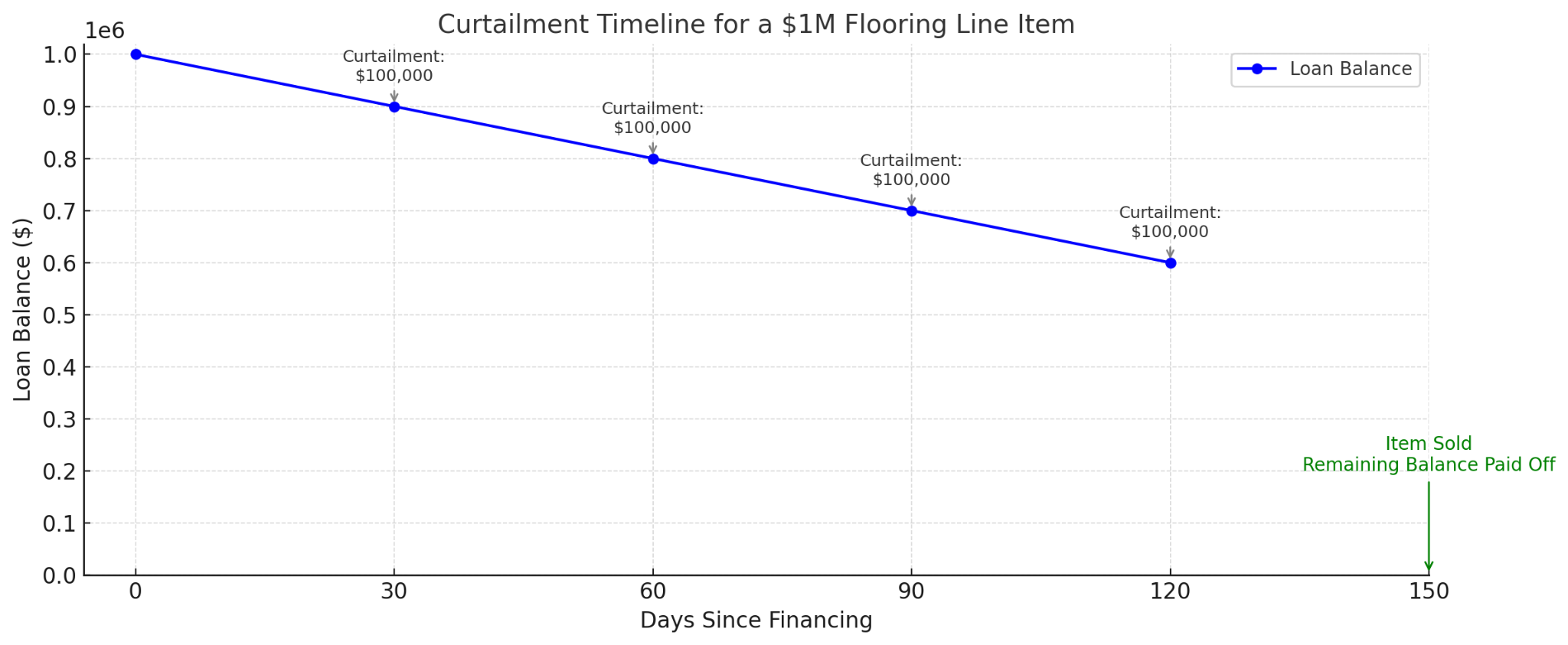Curtailment
“Snip That Principal, Keep the Iron.”

What Is a Curtailment?
In commercial flooring lines of credit, a curtailment is a scheduled or triggered partial principal repayment that a borrower (e.g., a dealership) must make on a financed inventory item before it is sold.
Think of it as a gradual reduction in the outstanding loan balance for each item in inventory.
Why Do Curtailments Exist?
Lenders use curtailments to:
Reduce risk as inventory ages
Encourage dealers to move inventory faster
Avoid having the entire loan repaid only when an item sells (which can take months)
How Curtailments Work:
Initial Draw:
Let’s say a dealer draws $25,000 on the floor plan line to finance a car.
The car sits unsold on the lot.
Curtailment Schedule:
The lender may require:10% repayment after 30 days
Another 10% after 60 days
And so on…
Example:
Day 0: Loan balance = $25,000
Day 30: Dealer pays $2,500 (curtailment), new balance = $22,500
Day 60: Another $2,500 → balance = $20,000
Sale of Item:
When the vehicle sells, the remaining $20,000 is paid off using sale proceeds.
The line of credit is replenished for future use.
At right is a visual timeline showing how curtailments reduce the loan balance over time for a $1Million flooring line item sold between
Day 120 and Day 150.

Related Topic
See: FLOORING LINES… specialized lines of credit used by businesses, particularlyautomobile dealerships
and equipment dealers, to purchase high-cost inventory items that are intended for resale.

